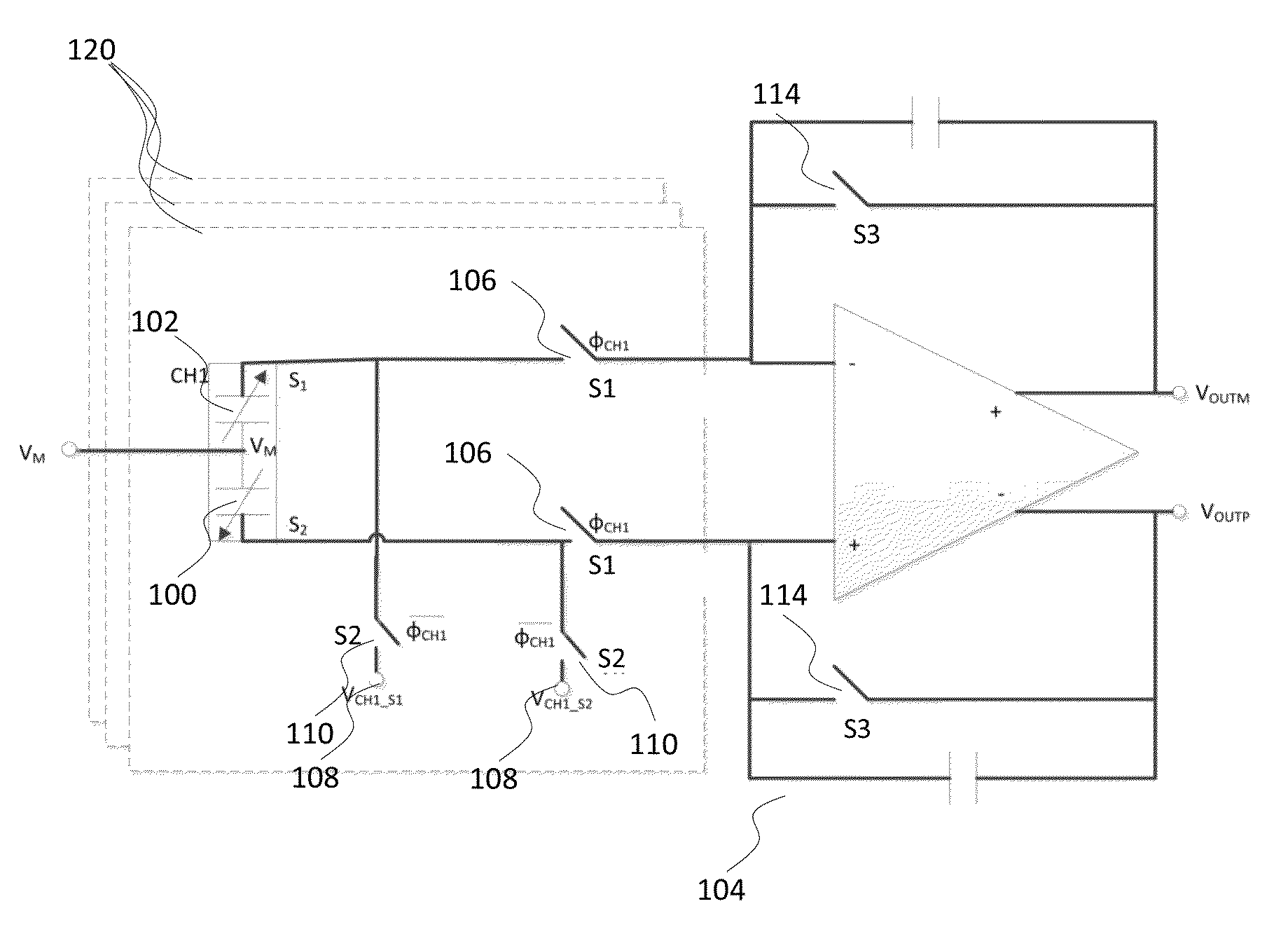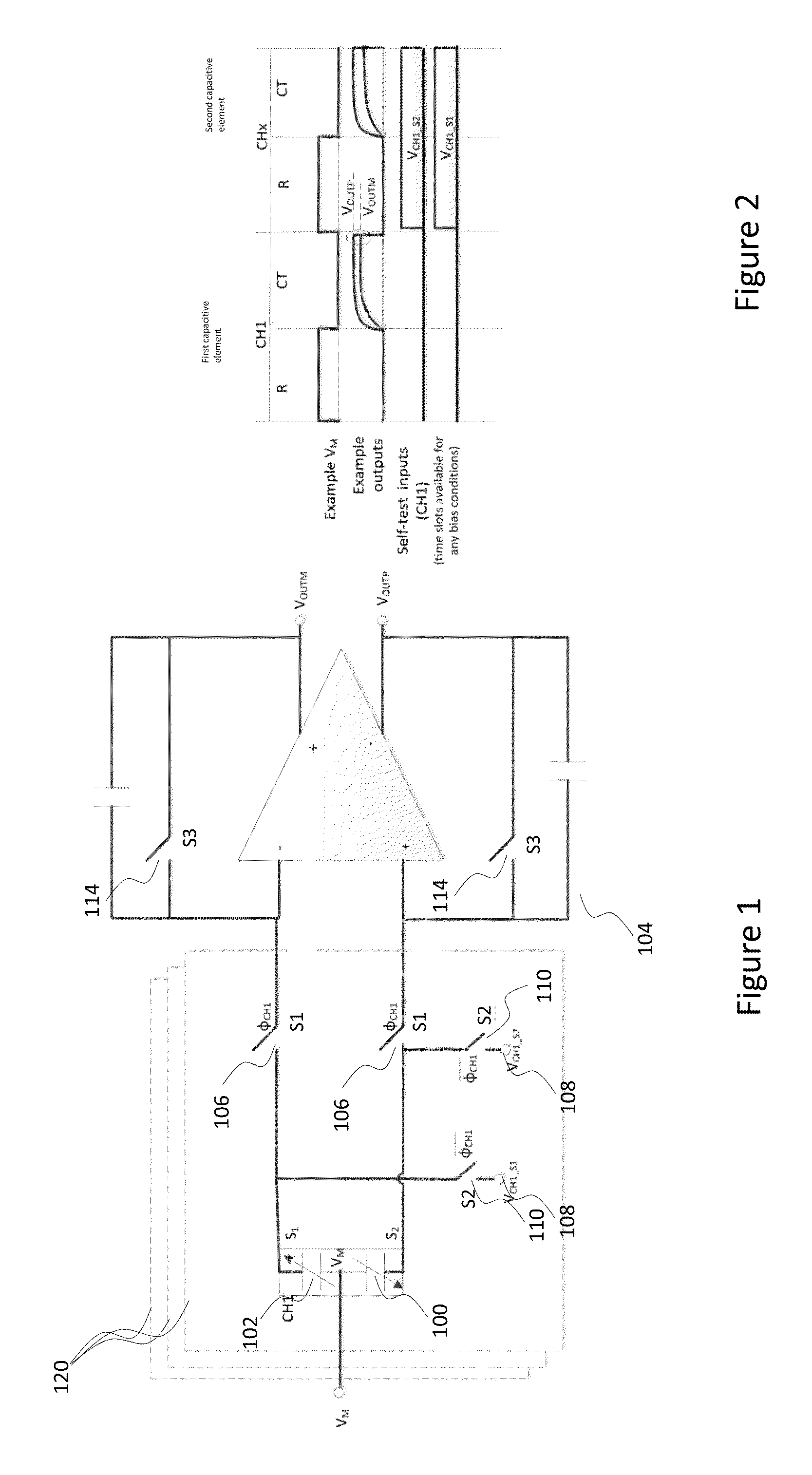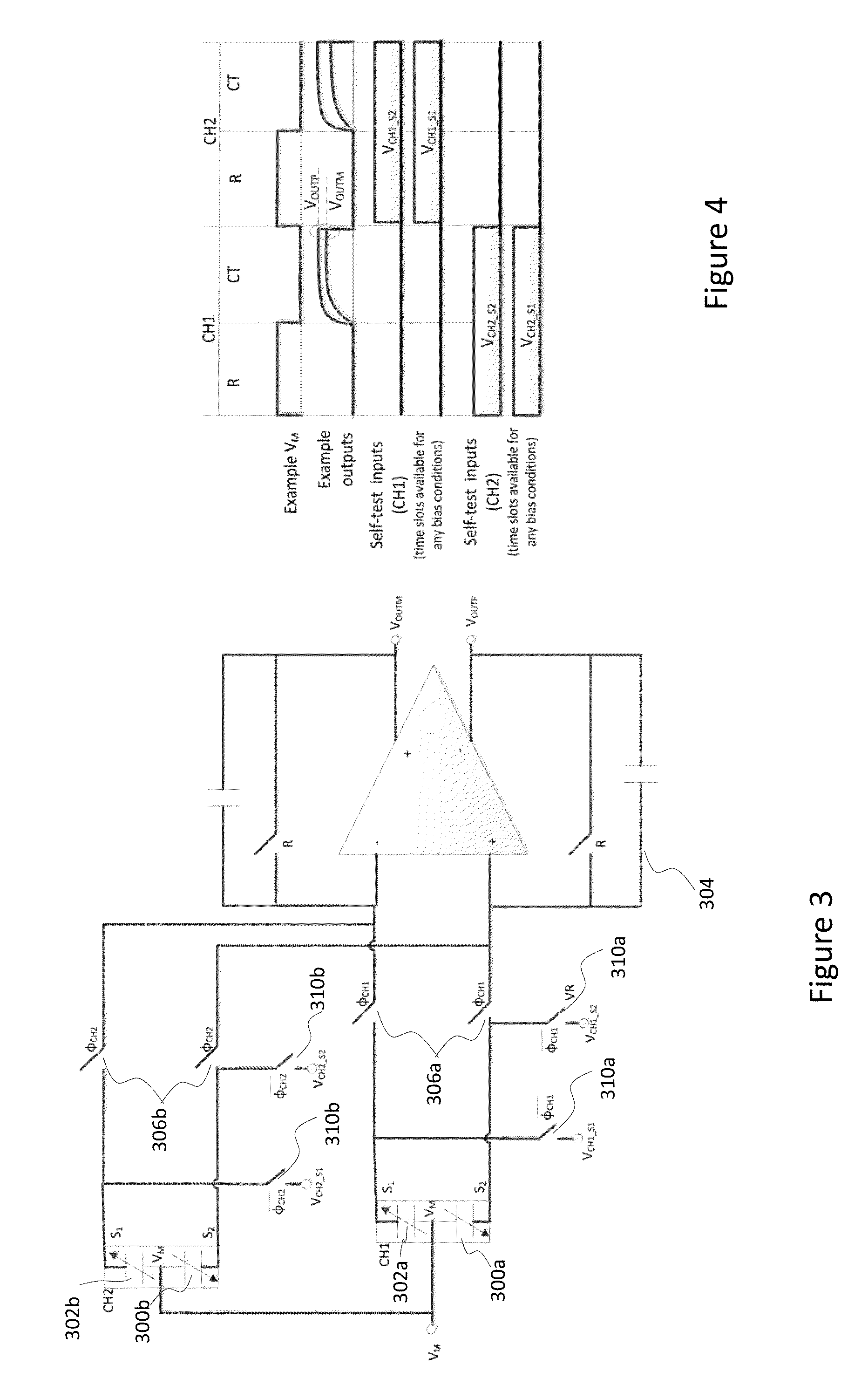Continuous self-test in capacitive sensor
a capacitive sensor and self-testing technology, applied in the field of microelectromechanical devices, can solve the problems of complex implementation, power consumption and complex power consumption of dc test signals, and cannot be used during normal operation
- Summary
- Abstract
- Description
- Claims
- Application Information
AI Technical Summary
Benefits of technology
Problems solved by technology
Method used
Image
Examples
Embodiment Construction
[0065]The following embodiments are exemplary. Although the specification may refer to “an”, “one”, or “some” embodiment(s), this does not necessarily mean that each such reference is to the same embodiment(s), or that the feature only applies to a single embodiment. Single features of different embodiments may be combined to provide further embodiments.
[0066]As used herein, the term “circuitry” refers to all of the following: (a) hardware-only circuit implementations, such as implementations in only analog and / or digital circuitry, wherein the circuitry may comprise discrete and / or integrated components, and (b) combinations of circuits and software (and / or firmware), such as (as applicable): (i) a combination of processor(s) or (ii) portions of processor(s) / software including digital signal processor(s), software, and memory(ies) that work together to cause an apparatus to perform various functions, and (c) circuits, such as a microprocessor(s) or a portion of a microprocessor(s),...
PUM
 Login to View More
Login to View More Abstract
Description
Claims
Application Information
 Login to View More
Login to View More - R&D
- Intellectual Property
- Life Sciences
- Materials
- Tech Scout
- Unparalleled Data Quality
- Higher Quality Content
- 60% Fewer Hallucinations
Browse by: Latest US Patents, China's latest patents, Technical Efficacy Thesaurus, Application Domain, Technology Topic, Popular Technical Reports.
© 2025 PatSnap. All rights reserved.Legal|Privacy policy|Modern Slavery Act Transparency Statement|Sitemap|About US| Contact US: help@patsnap.com



